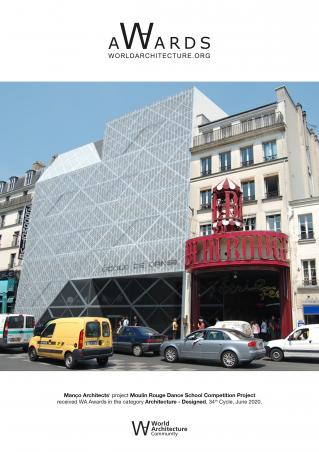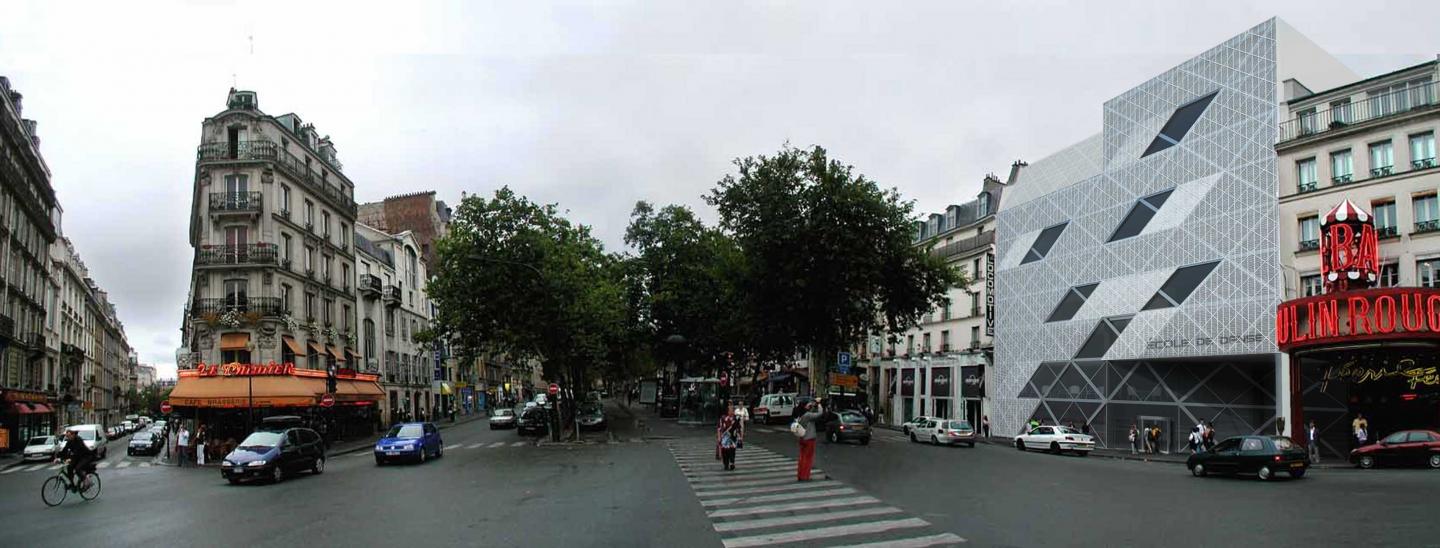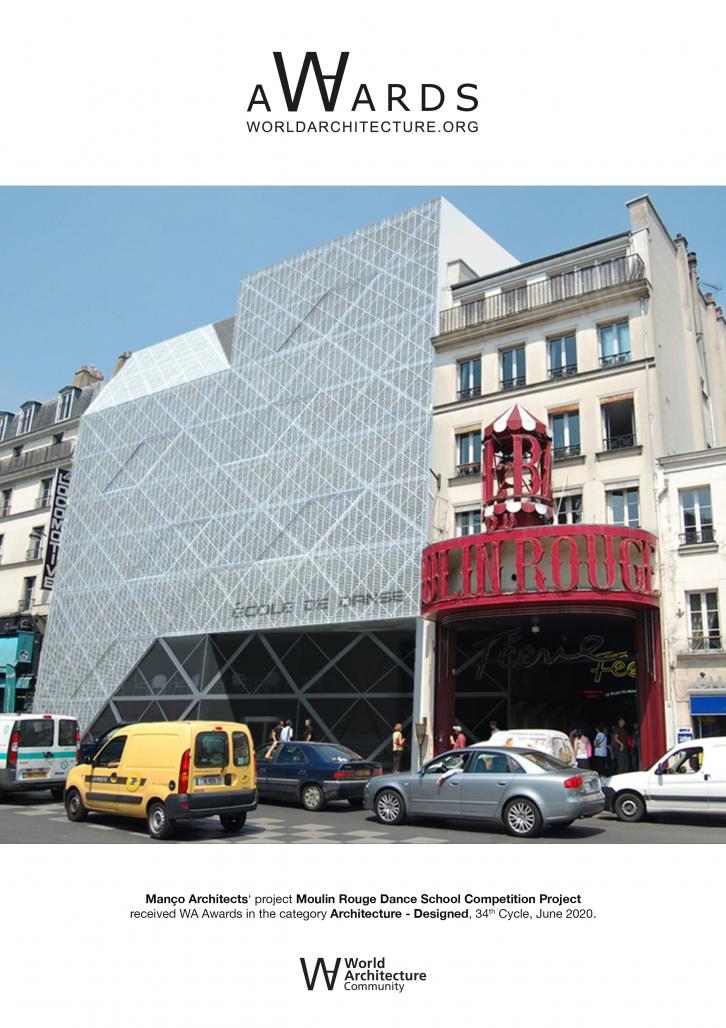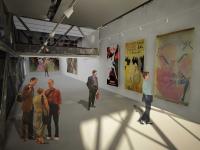GENERAL
A thorough examination of the competition program alongside researches conducted on the history of Moulin Rouge and its surroundings have resulted in the decision to design a building that is fundamentally distinct in its design and materials yet referring to the specific context of the project. Accordingly, a contemporary “addition” that will emphasize the original Moulin Rouge by its contrasting characteristics is proposed instead of a mere continuation of the existing architectural pattern.
From the start, the foremost objective of planning has been the creation of rational and flexible spaces meeting the technical and volumetric requirements of the program for the designated functions.
A steel structure on top of reinforced concrete basements with an approximately 10m x 10m grid is proposed to achieve the desired “spaciousness” with the minimum number of columns. Further advantages of steel structure, the much shorter construction phase in a dense urban setting and the opportunity to benefit from recycled materials and recycle those components again following the end of the building’s life span, also contributed to the preference of steel.
In addition to purely functional purposes, the steel structure left visible from inside and outside is turned into the defining visual characteristic of the proposed building as well. Contextual aspects, such as the bare structures of industrial facilities that once dominated the area, the monumental steel structures erected in the 19th century, an era whose aesthetics have always been an essential part of the identity and shows of Moulin Rouge since its foundation, and finally the “X” pattern repeated on the blades and windows of the iconic Red Windmill identifying Moulin Rouge are referred to with the naked structure.
The metal skeleton is veiled by a continuous layer of metal mesh, except for the ground and 1st floors that are intentionally kept transparent to ensure visual connection with the street. The mesh will function both as a filter for the sunlight hitting the southwest facing façade and as a giant screen for digital images and animations with the LED lighting system incorporated. The red windmill that is not retained in the proposed design as it is now, will be removed physically but it’s symbolic image will be revived as a digital animation.
The silhouettes of dancers training inside visible from the street through the mesh layer is thought to create a large scale “peep-show” in addition to the neighboring erotic attractions of Pigalle. The metal skin resembling fishnet stockings worn by Moulin Rouge dancers as an essential element of eroticism is also deemed as an additional visual reference to the context.
To have a continuously changing façade outlook, sliding shutters are irregularly placed on the metal mesh layer with individual openings at each floor.
PLANNING
In order to ease the access, the public and semi-public spaces are located on the 1st basement, ground and 1st floors. The private sections of the building, the administration, dressing rooms, training rooms, gymnasium and exterior space are all planned on floors higher up.
In order to connect the exhibition hall with the entrance and the street while complying with the height limitation, the auditoriums that do not need natural lighting are located underground.
The exhibition space is designed as the center of attention by placing it in a way that enables its visibility from the entrance hall, cafeteria, bookstore, as well as the street. In order to create a connection with the existing Moulin Rouge building, a triangle was cut out of the plans of ground and 1st floor resulting in a double storey high void. The removal of the separating wall of the existing building after taking necessary structural precautions will unite the entrance hall of the old building with the façade of the exhibition space and the entrance facing Place Blanche. This way, an additional semi-covered space will be<
2009
2009
Steel structure
Ali Manço, Aytaç Manço, Zuhtu Usta, Gufran Baykal
Moulin Rouge Dance School Competition Project by Manco Architects in France won the WA Award Cycle 34. Please find below the WA Award poster for this project.

Downloaded 4 times.




.jpg)






